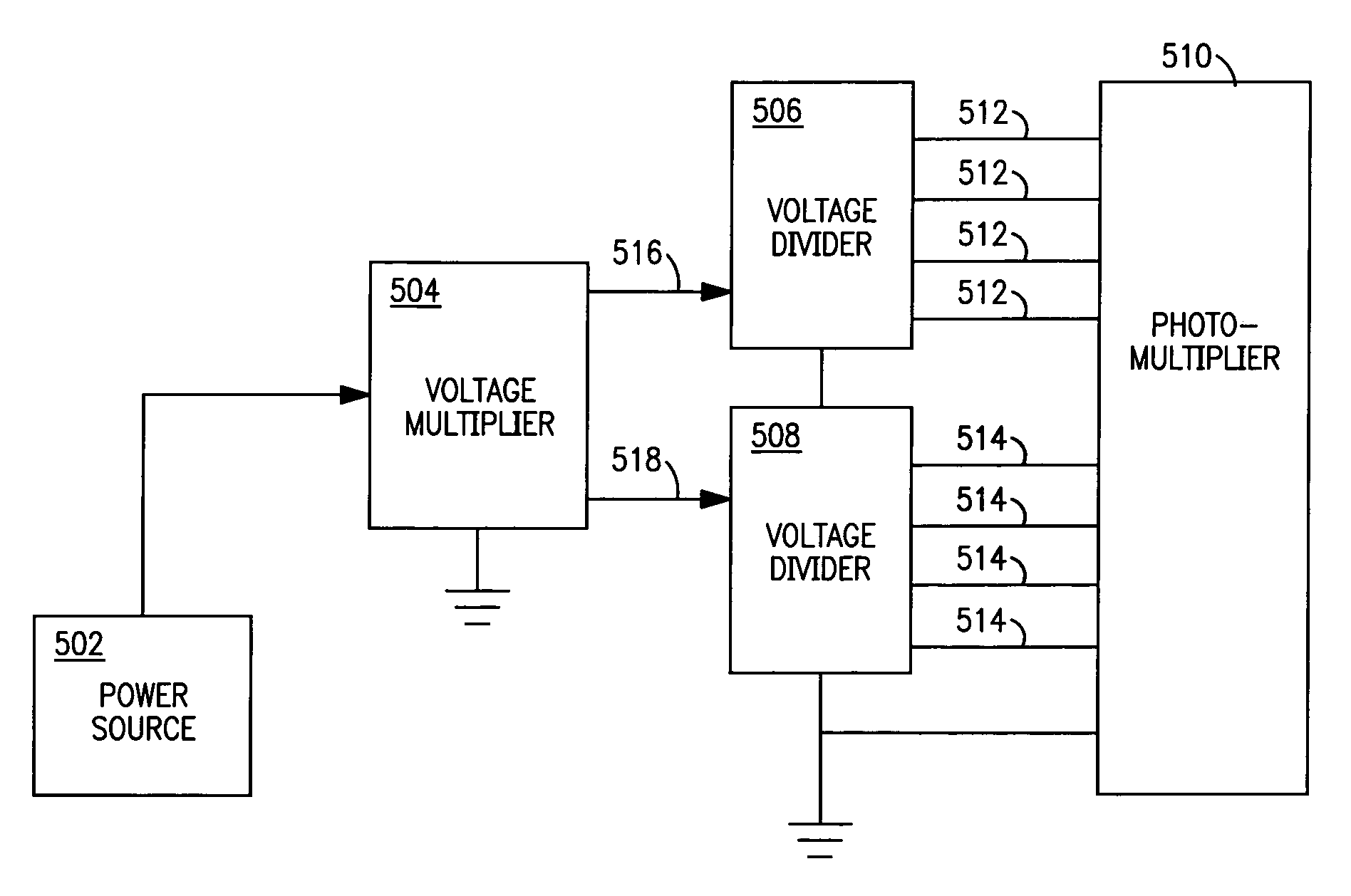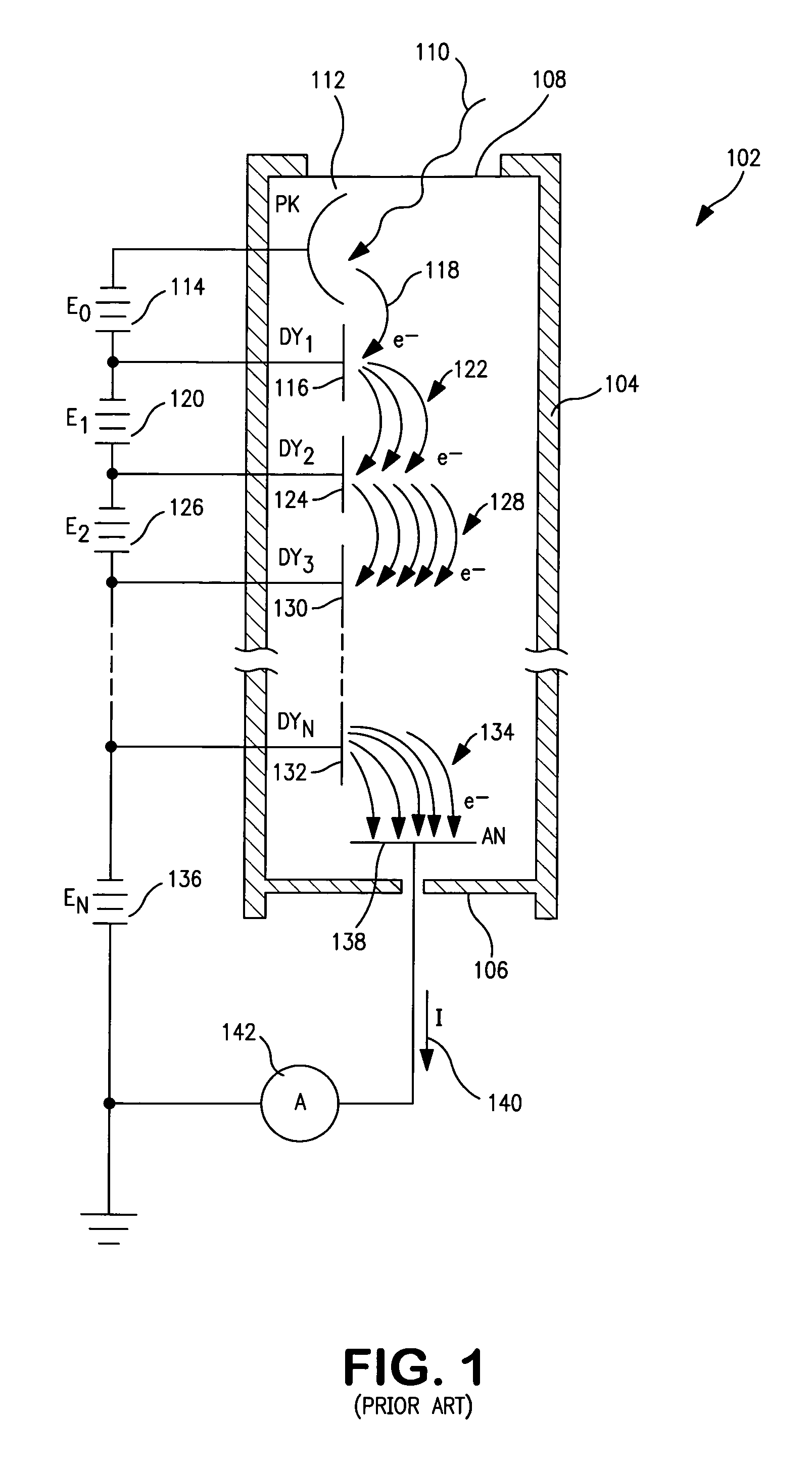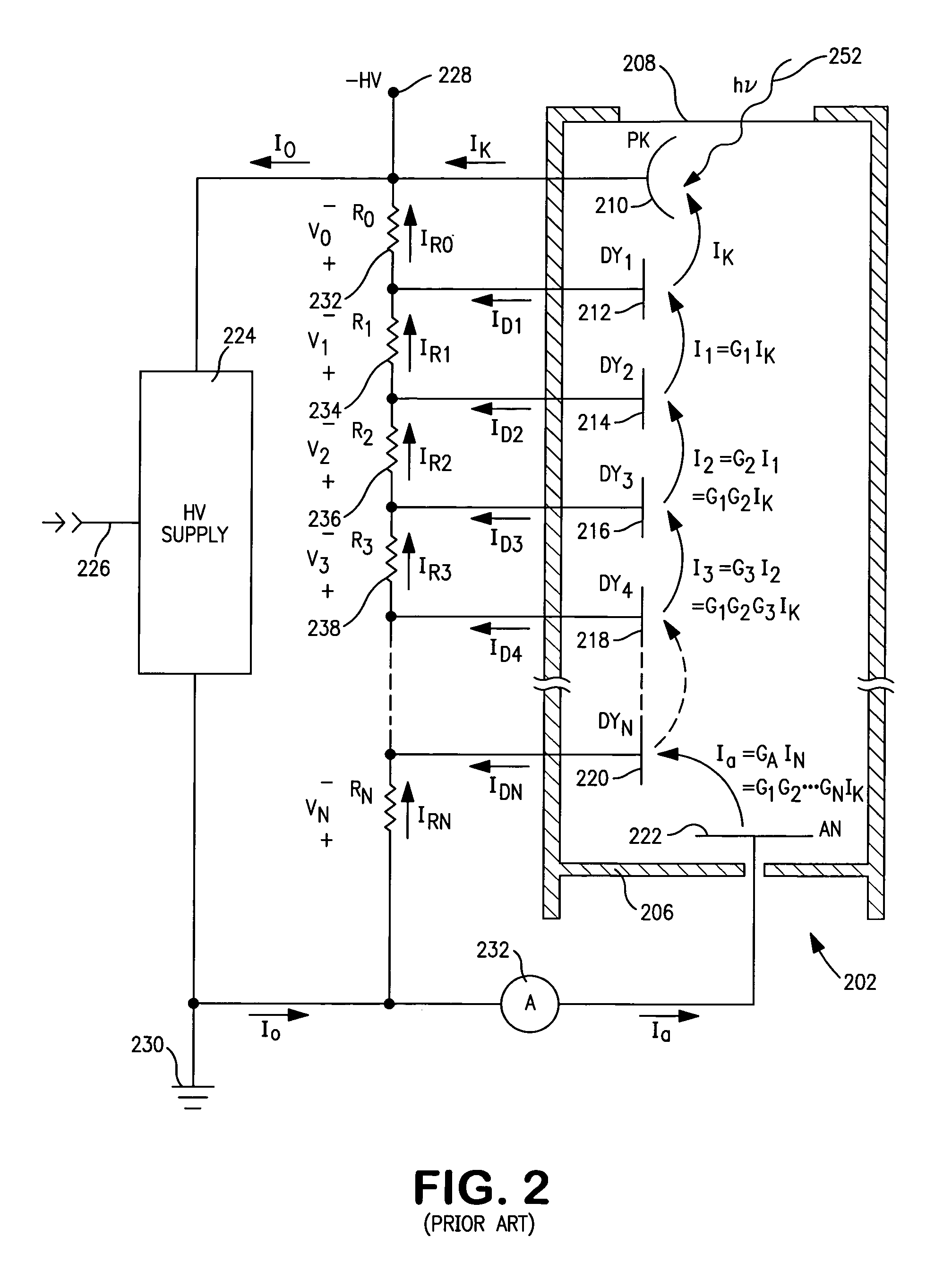Low power stabilized voltage divider network
a voltage divider network, low-power stabilized technology, applied in the field of circuitry, can solve the problems of reducing the efficiency and reducing the power drawn from voltage multipliers, so as to facilitate the optimization of front-end and back-end sections of voltage divider networks. the effect of reducing the power drawn from the voltage multiplier
- Summary
- Abstract
- Description
- Claims
- Application Information
AI Technical Summary
Benefits of technology
Problems solved by technology
Method used
Image
Examples
Embodiment Construction
[0044]The present invention describes an improved method of biasing photomultiplier tubes and related devices by reducing the power consumption and current draw, and providing more stable and more optimal electrode bias voltages. An aspect of the invention is based on partitioning the voltage divider network into sections that can be independently sourced by the voltage multiplier circuit. For example, if the high voltage −HV produced by the voltage multiplier is −1100 volts, and the photomultiplier tube has, for example, twelve electrodes including a photocathode, an anode, and ten dynodes, the voltage divider circuit can be used to create eleven bias levels (ground, −100 volts, −200 volts, −300 volts, −400 volts, −500 volts, −600 volts, −700 volts, −800 volts, −900 volts, −1000 volts, and −1100 volts). In practice, the voltage levels so produced do not necessarily have to be evenly spaced. Further, the voltage divider circuits can designed independently to produce voltage bias lev...
PUM
 Login to View More
Login to View More Abstract
Description
Claims
Application Information
 Login to View More
Login to View More - R&D
- Intellectual Property
- Life Sciences
- Materials
- Tech Scout
- Unparalleled Data Quality
- Higher Quality Content
- 60% Fewer Hallucinations
Browse by: Latest US Patents, China's latest patents, Technical Efficacy Thesaurus, Application Domain, Technology Topic, Popular Technical Reports.
© 2025 PatSnap. All rights reserved.Legal|Privacy policy|Modern Slavery Act Transparency Statement|Sitemap|About US| Contact US: help@patsnap.com



